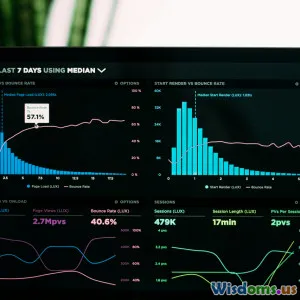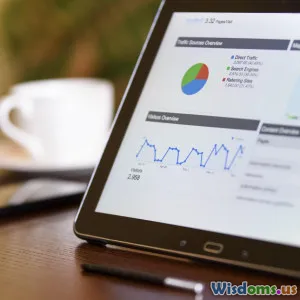
Simple Steps For Transforming Raw Data Into Stunning Visuals
15 min read Learn effective steps to convert raw data into impactful and compelling visualizations for better business insights. (0 Reviews)
Simple Steps For Transforming Raw Data Into Stunning Visuals
No matter your industry, data fuels modern decision-making. Yet, raw figures and spreadsheets rarely inspire action by themselves. It is the transformation from numbers to visual stories that sparks creativity and drives impact. Data visualization is more accessible—and vital—than ever. This guide walks you through actionable, structured steps to convert raw data into visuals that enlighten, convince, and engage your audience.
Understanding Your Data: The Foundation Of Effective Visualization
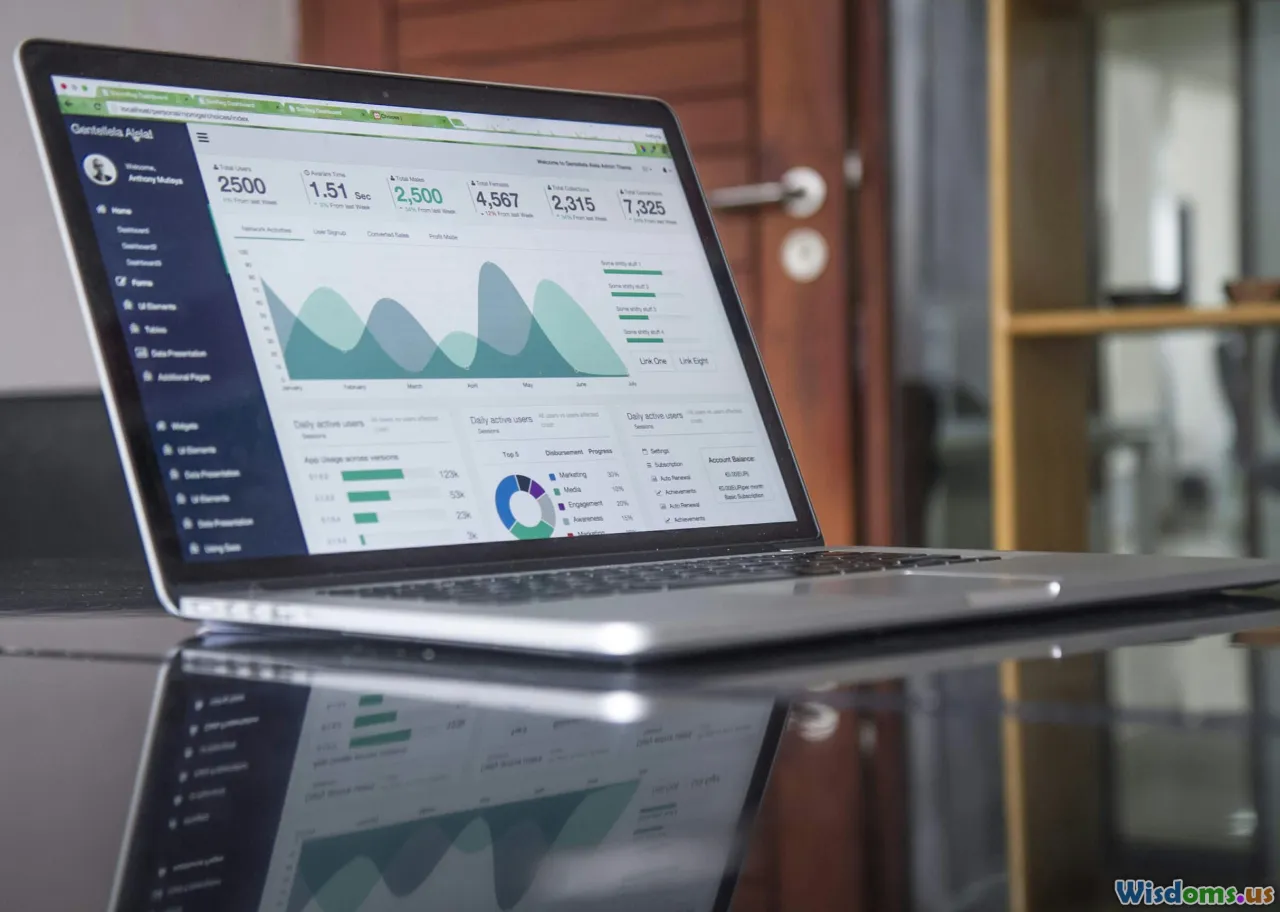
Before diving into colors and chart types, start by thoroughly understanding the data you wish to visualize. Without a strong grasp of your raw data—the sources, structure, and context—visuals risk misleading interpretations.
Know Your Data Source
Is your data sourced from automated monitoring systems, customer surveys, transaction records, or third-party studies? Each carries unique structures, biases, and limitations. For example, web analytics differ dramatically from financial ledgers in terms of time granularity and available dimensions.
Example: A retail manager analyzing daily sales will need to know if the figures include returns, online orders, promotions, and whether timestamps reflect when an order was placed or shipped.
Cleanse And Preprocess Your Dataset
Raw data seldom comes ready for prime time. It often contains inconsistencies, blanks, duplications, and errors. Use tools like Excel, Google Sheets, or scripting languages (Python/Pandas, R) to:
- Remove duplicates
- Handle missing values by filtering or imputing
- Normalize formats (dates, currencies, categorizations)
- Aggregate or summarize where needed
Pro tip: Visualizing unprocessed data can easily introduce biases or magnify noise, reducing credibility and effectiveness. Take preprocessing seriously.
Clarify The Message: What Story Do You Want To Tell?

Exceptional visuals do more than display charts—they communicate insights. Before selecting any graphical representation, determine the key question your audience needs answered.
Ask yourself:
- What is the single most important fact or trend to reveal?
- Who will view this (colleagues, executives, customers, the public)?
- What action or decision should this visual prompt?
Example: If presenting cybersecurity incident reporting to the board, your aim might be to highlight quarterly downward trends in severity and response times, rather than overloading them with every event's minutiae.
Select The Right Message-Driven Metric
Not all data is equally important. Focusing on KPIs (key performance indicators), proportions, or outliers—rather than raw totals—shifts your visualization from noise to clarity.
- Instead of “There were 5,024 logins last month,” highlight: “87% of active users completed two-factor authentication successfully.”
- Rather than infinite product inventory counts, emphasize: “The top five bestsellers represent 62% of all units sold.”
Choose The Right Visualization Type
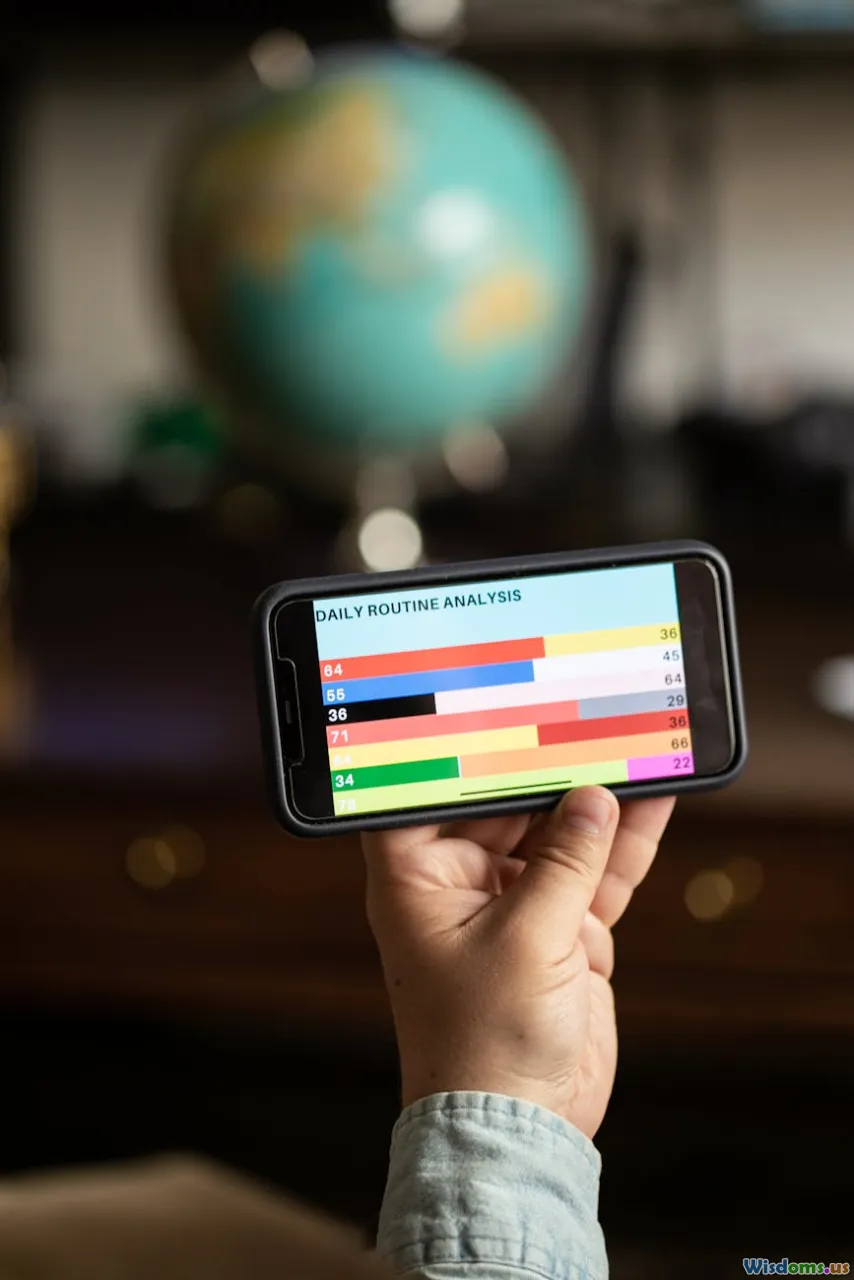
One of the biggest pitfalls in data visualization is mismatching data and chart type. The wrong visual can obscure key messages or even mislead. Selecting with intention, based on your clarified story, is crucial.
Common Visualization Types And When To Use Them
- Bar/Column Charts: Comparisons among categories (e.g., sales by region, website traffic by source).
- Line Charts: Trends over time (e.g., monthly growth, temperature across seasons).
- Pie/Donut Charts: Showing proportions—but only for up to five categories with clear differences.
- Example: Showing market share between three leading competitors.
- Scatterplots: Examining relationships between two numeric variables (e.g., advertising budget vs revenue).
- Heatmaps: Revealing concentrations or intensities (e.g., website click maps, scheduling densities).
- Maps: Geographical data (e.g., customer locations, election results).
- Histograms: Distributions and frequency (e.g., age groups of respondents).
Tip: When in doubt, aim for simplicity. Avoid 3D and unnecessary embellishments unless they bring genuine clarity.
Use the “What-Am-I-Looking-At” Principle
Publishers often ask "What am I looking at here?" Give viewers an unmistakable entry point—by using clear labels, legends, or brief captions above visuals.
Transforming Data With Accessible Tools

Specialized software is no longer required for powerful visualization. Both beginners and professionals can leverage intuitive, affordable tools to transform data—often without code.
Popular Visualization Tools
- Microsoft Excel & Google Sheets: Universal; support basic charts, quick summaries, and even mapping features.
- Tableau: Drag-and-drop interface for interactive dashboards, suitable for business users and public sharing.
- Power BI: Integrates seamlessly with Microsoft ecosystem; ideal for enterprise reporting and large datasets.
- Google Data Studio (now Looker Studio): Free, web-based, integrates with many data sources.
- Canva, Venngage: Templates and beginner-friendly infographics for polished presentations.
- Programming Languages: Python (matplotlib, seaborn, Plotly), R, and JavaScript (D3.js) allow for customization—excellent for advanced users.
Real-World Example: A sales team preparing quarterly reports leverages Tableau for exploring multi-dimensional data and exporting interactive dashboards, while the marketing branch pairs raw Google Ads data with Looker Studio to produce visually rich campaign analyses.
Workflow Tip: Start With Prototyping
Before perfecting the final chart, sketch your idea—either on paper or using basic software. Iterate based on feedback before committing significant detail and polish.
Best Practices In Design: Making Data Meaningful And Beautiful

A well-structured visualization attracts attention and fosters comprehension, while poor design sows confusion. Apply universal design principles to optimize your work:
Color With Purpose
- Be mindful of accessibility: Ensure sufficient contrast; use colorblind-friendly palettes if possible (ColorBrewer, etc).
- Add meaning, not clutter: Use color to distinguish categories or signal performance (reds for decline, greens for growth), but avoid rainbow gradients unless mapping spectrum data.
- Use neutral backgrounds: White or light backgrounds maximize legibility, preventing distraction.
Simplify, Then Simplify Again
- Remove nonessential gridlines, axis ticks, or textual clutter.
- Direct attention using highlights (bold a bar, circle an outlier).
- Limit chart “noise” (e.g., avoid effects like shadows and gradients that serve no purpose).
Make The Data The Star
Design elements should enhance, not overpower, your story. Maintain focus with concise titles, clear labels, and legends directly tied to chart elements.
Case In Point: Consider The New York Times’ election maps—clarity, legibility, and minimalism communicate crucial variation in counties at a glance, outperforming more lavish graphics.
Tell A Narrative With Visualizations
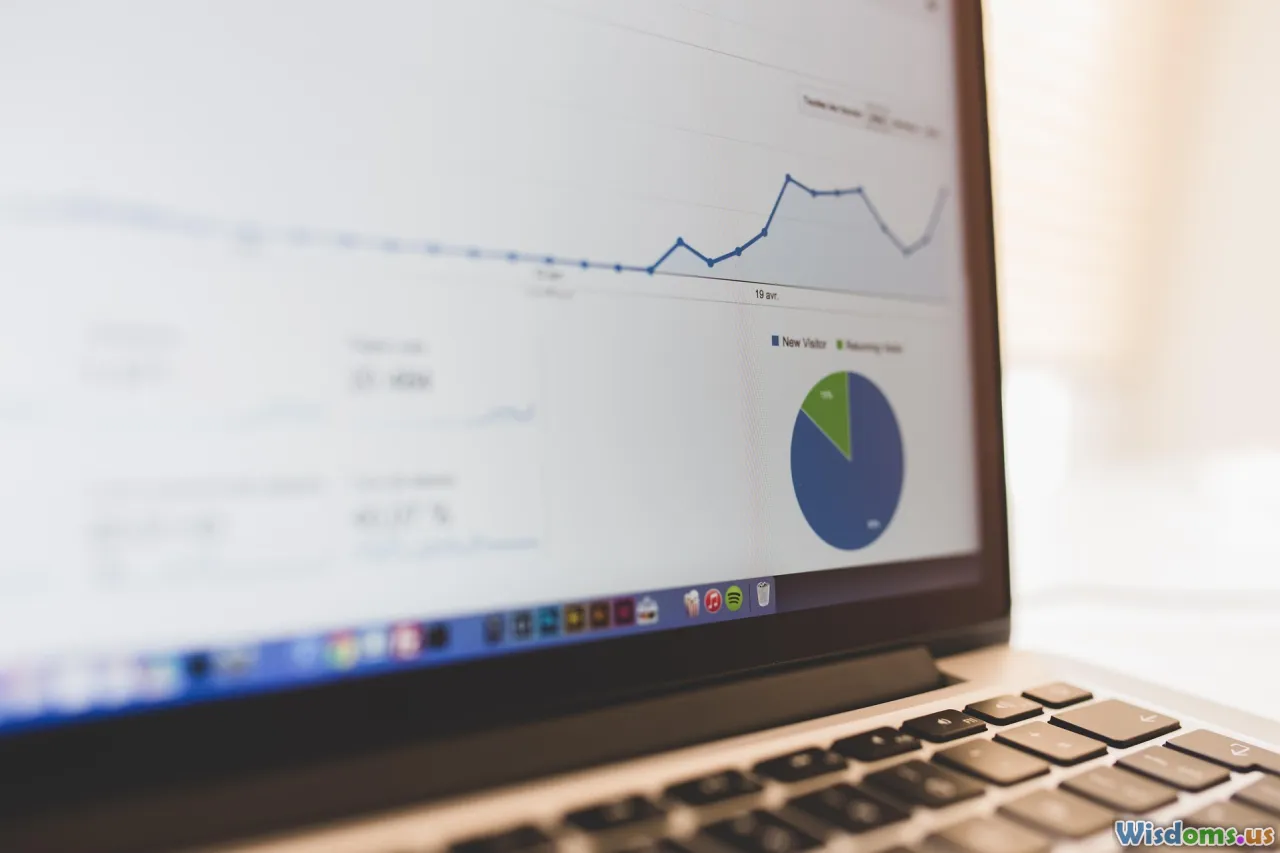
Pure graphics can inform, but bringing your audience on a journey fosters better recall and actionable insight. Think of each visualization as a scene in your data’s narrative.
Structure Your Visualizations As Stories
- Set the Scene: Start with context—briefly establish baseline information.
- Example: “Company revenue has fluctuated quarter-to-quarter due to several major contracts.”
- Reveal Conflict or Key Insight: Show what stands out—the unexpected spike, valley, or correlation.
- Guide To The Resolution: Offer interpretations with key takeaways: “Therefore, focusing on contract renewals each August might stabilize future growth.”
Use Annotation And Call-outs
Direct attention by labeling anomalies, adding text boxes, or arrows that explain notable points.
Interactive Dashboards: In tools like Tableau or Power BI, interactive filters and drilldowns can let users investigate their own questions, extending narrative power.
Avoiding Pitfalls: Common Data Visualization Mistakes

Even well-intentioned visuals sometimes mislead or confuse. Watch out for these traps:
- Cherry-picking: Only displaying data that supports your narrative, ignoring contradictory facts. Always represent the full picture—even outliers or inconvenient truths.
- Misleading scales: Manipulating axes to exaggerate trends—e.g., truncating the Y-axis making small changes look huge.
- Overcrowding: Packing too many categories, colors, or data series into a single graphic.
- Neglecting context: Displaying absolute values without timelines or comparisons; viewers may not realize spikes are seasonal, or totals are large/small for your field.
- Inadequate citations: Always source your data. Transparent methods build confidence in your findings.
Example: A news outlet may show sharp decrease in unemployment using a chart that only depicts the previous month, omitting the multi-year trend which contextualizes whether the drop is significant.
Measuring The Impact Of Your Visualizations

How do you know if your visualizations were effective? Success isn’t just artistic or technical—it’s about whether your visualizations drive understanding or real-world decisions.
Gather User Feedback
Solicit reactions from colleagues or end-users. Did they:
- Accurately grasp the key message?
- Act as intended—changing behavior, supporting proposed actions?
- Report confusion or surprise, indicating an unexpected angle or design flaw?
Use Analytics Tools
When visuals are published online, measure:
- Engagement rates: Time spent on charts, questions asked, comments received.
- Click paths: Where did viewers explore more or drop off?
- A/B testing: Try different visual styles or data cuts to see what drives clarity or conversions.
Continuous Improvement
Treat visualization as a process, not a one-time deliverable. Update as new data arrives, business goals shift, or further feedback surfaces.
Inspiring Examples: Turning Data Into Action

Across industries, data visualization has proven transformative:
- Public Health: During the COVID-19 pandemic, the Johns Hopkins University dashboard became the global standard in case tracking, updating millions daily with interactive maps and timelines. Its interplay of stark color coding and uncluttered graphs emphasizing trends over absolute numbers fostered public awareness and policy.
- Business Analytics: Spotify for Artists gives musicians an at-a-glance dashboard of their streams by city, listener demographics, and spikes from playlist features, enabling tactical marketing moves and fan engagement strategies.
- Education: Gapminder’s animated graphs, most famously presented by Hans Rosling, powerfully depicted decades of developmental progress worldwide, overturning numerous misconceptions with stunning simplicity.
These examples showcase how marrying clear narrative, robust data, and superb design yields not just information but, more importantly, measurable change.
Once an intimidating process, transforming raw data into stunning visuals is now a skill within anyone’s reach. By systematically understanding your data, centering your audience, choosing the right chart type, prioritizing clear design, and aiming to tell compelling stories, you elevate your insights from static rows to action-inspiring visuals. As digital platforms and datasets expand, visualization remains the universal language everyone can understand—and the most persuasive path to insight.
Rate the Post
User Reviews
Popular Posts












